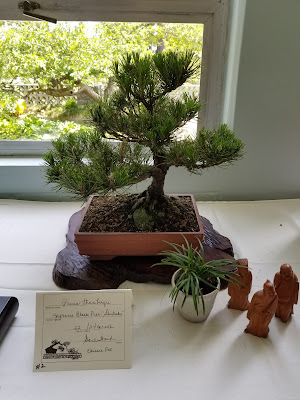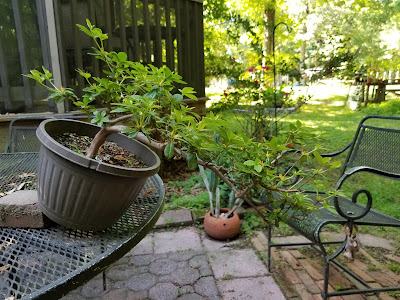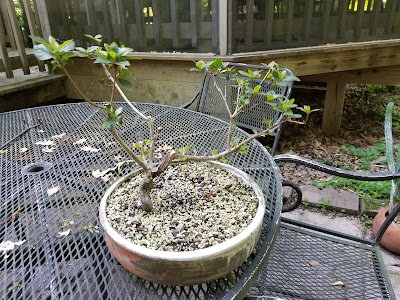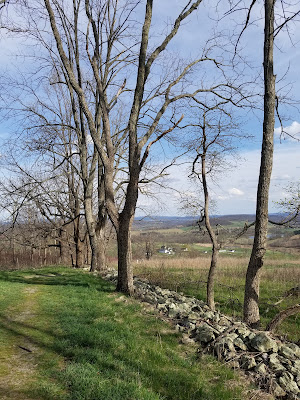 |
| A nice 22-year old Japanese black pine in the exhibit at the Norfolk Botanical Garden show. This was a nice example of one of the older trees in the exhibit. |
Coming back from the show, I was inspired and I knew it was time for me to work on my azaleas. These plants have a somewhat interesting history.
As some of my readers know, our back yard runs into Newport News Park. A quick search on the internet shows that our park is the largest city park in the country, totaling 8,065 acres (3063 hectares). It connects to the Colonial National Historic Park (no fence in between) which is another 9,349 acres (3751 hectares) making up a connected natural area that is more than 47 square miles (70 square km) in size. This is great for us, we love nature and to hike and bike, but as you can imagine, nature is full of all kinds of pests including deer. These deer have found a highway through our and our neighbors’ yards into our subdivision. Even this morning while walking the dog, you could watch them scurrying back into the woods behind our home after a night of debauchery on our landscaping plants. Finally, an additional problem has become all the ticks that these deer drop in our neighborhood. When watering my plants, I have to be vigilant and make sure I did not pick up a few of these critters; Lyme is always lurking around the corner.
The woman that we bought our home from had planted azaleas throughout the yard, and if there is an ice cream plant for deer, well it is the azalea (and maybe the hosta). Considering we have been living here for almost 19 years, these poor plants have been hit by deer for more than 20 years. The only way they were able to survive was either to try to grow out of the reach of the deer or to hide themselves and grow as low as possible and creep through the plant litter. Over the past few years we discovered a few plants that held on for dear life (pardon the pun), and so I decided to dig them up, save them and torture them in a completely different way! I dug up three, three years ago. One did not make it, but the two that did rewarded me the next year with a full canopy of white flowers. This past spring they did it again and finally this past weekend I worked a bit on some preliminary styling and removing all the spent flowers. Because of the creeping habit one is a natural cascade, while in the other, I am trying to encourage a new leader or main stem.
The woman that we bought our home from had planted azaleas throughout the yard, and if there is an ice cream plant for deer, well it is the azalea (and maybe the hosta). Considering we have been living here for almost 19 years, these poor plants have been hit by deer for more than 20 years. The only way they were able to survive was either to try to grow out of the reach of the deer or to hide themselves and grow as low as possible and creep through the plant litter. Over the past few years we discovered a few plants that held on for dear life (pardon the pun), and so I decided to dig them up, save them and torture them in a completely different way! I dug up three, three years ago. One did not make it, but the two that did rewarded me the next year with a full canopy of white flowers. This past spring they did it again and finally this past weekend I worked a bit on some preliminary styling and removing all the spent flowers. Because of the creeping habit one is a natural cascade, while in the other, I am trying to encourage a new leader or main stem.
 |
| This azalea is two years out of the ground. I am trying to develop three foliage pads and hoping to develop a main leader (that crazy shoot in the middle). |
This winter I decided to save one more azalea. To my surprise, when I started digging, the plant had spread itself over the ground through the litter so much that some of the branches had air layered themselves. Air layering means that they had rooted into the soil while still connected to the mother plant. Two of the branches only had a few roots, but they did have some. Feeling brave, I cut those branches off stuck them into a pot with my soil mix, figuring I had nothing to lose. I am happy to report that I now have four happy azaleas growing. It will be some time, before I have something to show for, but it sure is interesting. Never a dull moment.
 |
| One of the air layers. This one had a long bare branch with a lot of roots along it so I needed a large pot to put it in. It is thriving. |










